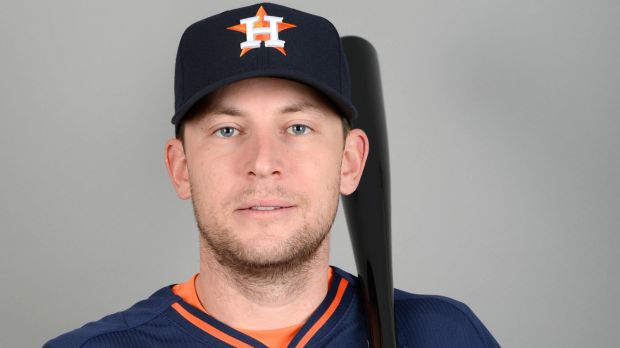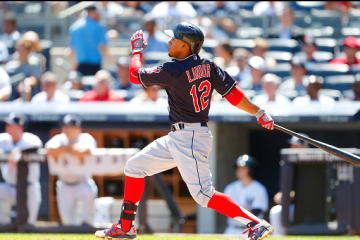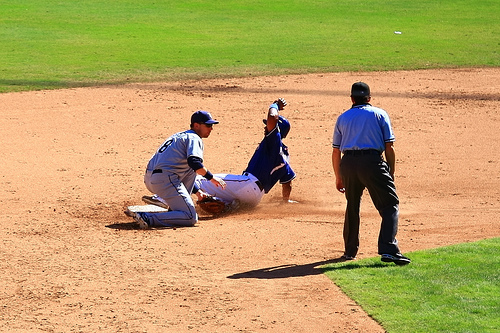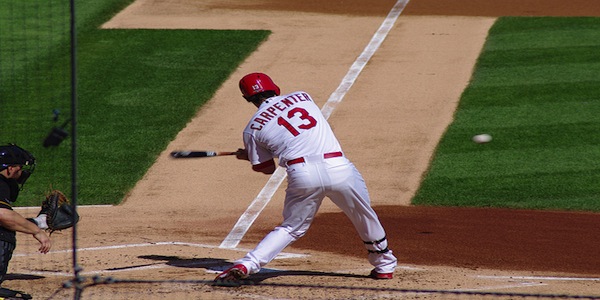2015 Fantasy Baseball: Plate Discipline — Shortstops

One of the great ironies in baseball is that positions often carry very different meanings at the big league level than they do in amateur baseball. No matter which country you are talking about, the best athletes were always pitchers and shortstops (often both). When you get to the big league level, the athleticism may carry over, but in terms of hitting prowess you usually find that shortstops are often the worst hitters on the diamond.
There are always notable exceptions to these rules. This is why we compare players with the median at their position. Usually, the position as a whole will find its level, but as we saw last time with the third basemen, some positions lag behind the others. So, like last time, we will begin by looking at the positional data overall to see what is going on.
| SO% | BB% | SO/BB | Oswing | Contact | SwStr | |
| Catchers | 18.0 | 9.1 | 1.98 | 28.1 | 80.1 | 8.1 |
| First Base | 18.7 | 10.4 | 1.80 | 28.8 | 78.2 | 9.5 |
| Second Base | 14.6 | 8.3 | 1.76 | 26.9 | 84.5 | 6.6 |
| Third Base | 17.5 | 7.8 | 2.24 | 29.7 | 80.8 | 9.0 |
| Shortstops | 14.6 | 6.8 | 2.15 | 29.9 | 84.6 | 7.0 |
Sometimes looking at the numbers tells a much more vivid story than simply talking about the numbers. For me, the key number above isn’t strikeouts, walks, or even strikeout to walk ratio. The key number is Oswing. That is the percentage of swings that come on balls outside the strike zone. As you can see, the average seems to be between 27 and 30 percent. The more pitches outside the zone you swing at, the lower your contact rate will be. Your swinging strike percentage will obviously be higher as well.
What we find is that there are some players that are able to overcome what I would call a bad process (high Oswing). They can’t overcome it forever. Usually when players get into their early thirties, their ability to hit those bad balls diminishes. If a player doesn’t swing at those bad balls then he can extend his prime later. So, we’ve made it a habit to look at the elite players at each position first. That way, you can see which players are most likely to decline sooner.
Elite
| SO% | BB% | SO/BB | Oswing | Contact | SwStr | |
| Hanley Ramirez | 16.5 | 9.6 | 1.72 | 26.2 | 82.5 | 7.6 |
| Troy Tulowitzki | 15.8 | 10.0 | 1.58 | 25.4 | 84.5 | 6.5 |
| Jimmy Rollins | 12.0 | 7.9 | 1.52 | 22.6 | 87.1 | 5.4 |
| Jhonny Peralta | 20.1 | 8.4 | 2.39 | 26.9 | 77.7 | 10.4 |
| Jose Reyes | 10.3 | 7.0 | 1.47 | 28.4 | 86.9 | 5.8 |
| Ian Desmond | 22.3 | 5.9 | 3.77 | 34.1 | 76.9 | 11.2 |
| Elvis Andrus | 13.5 | 7.8 | 1.73 | 23.1 | 87.4 | 4.7 |
| Median | 14.6 | 6.8 | 2.15 | 29.9 | 84.6 | 7.0 |
The shortstop position is a perfect example of why I use the median score and not the mean. The position is what we would call bimodal. In simple plain English, it means that we have an unusual distribution of statistics where some players are performing very well and some are on the opposite extreme. There is very little in between and that tends to skew the data. Ian Desmond and Jhonny Peralta are examples of the dangerous end.
Peralta in particular is a player that is entering that dangerous portion of his career where we could see a sudden drop off. I’ve cautioned fantasy owners in the past about giving up on Peralta too soon. He seems to make it a habit it overcoming the odds. No one overcomes father time. You can cheat the aging process (and he has), you can stave it off for a year or two, but time catches up with everyone. Desmond still has a few seasons before he has to worry about that, but he is a prime candidate for regression in a few years.
The others demonstrate why they are elite. Shortstops usually have less power than players at other positions, so it stands to reason that most of them would have fewer walks. So, when evaluating plate discipline you sometimes have to throw the performance numbers out the window. Still, when taking Desmond and Peralta out of the equation, the others still had strikeout to walk ratios better than two to one.
Regulars and Bench
| SO% | BB% | SO/BB | Oswing | Contact | SwStr | |
| Starlin Castro | 15.6 | 5.2 | 3.00 | 33.7 | 83.3 | 7.9 |
| Alexei Ramirez | 11.9 | 4.8 | 2.47 | 37.9 | 84.6 | 7.8 |
| Alcides Escobar | 13.3 | 4.2 | 3.16 | 34.5 | 84.3 | 7.5 |
| Erick Aybar | 11.3 | 4.9 | 2.31 | 36.9 | 88.1 | 5.7 |
| Jean Segura | 13.1 | 4.9 | 2.67 | 35.9 | 85.6 | 6.9 |
| Asdrubal Cabrera | 17.1 | 7.6 | 2.25 | 29.7 | 83.3 | 7.7 |
| J.J. Hardy | 14.6 | 6.8 | 2.15 | 26.3 | 85.1 | 5.8 |
| Median | 14.6 | 6.8 | 2.15 | 29.9 | 84.6 | 7.0 |
J.J Hardy is the median shortstop. Who would have thunk it? Most of these guys demonstrate why they aren’t elite. The funny thing is that some of them have been considered elite in the past. Jean Segura was picked high last year on the strength of his speed. Asdrubal Cabrera is a couple of years away from elite status. Starlin Castro and Alexei Ramirez are on the border of elite status as well.
Still, when you look at those Oswing rates you can see why more discerning fantasy players are waiting to pick these guys. If you happen to be the happy (or not so happy) owner of one of these guys you just have to be careful how much you rely on them. If you are in a six category league you really have to be careful what you hope for.
Waivers
| SO% | BB% | SO/BB | Oswing | Contact | SwStr | |
| Andrelton Simmons | 9.5 | 5.9 | 1.61 | 29.9 | 87.4 | 6.0 |
| Zack Cozart | 16.7 | 4.6 | 3.63 | 30.6 | 84.5 | 7.2 |
| Jed Lowrie | 16.2 | 9.2 | 1.76 | 24.9 | 84.8 | 6.8 |
| Adeiny Hechavarria | 16.5 | 4.7 | 3.51 | 37.6 | 84.2 | 8.1 |
| Ruben Tejada | 14.4 | 8.5 | 1.69 | 28.3 | 85.3 | 6.6 |
| Alexi Amarista | 14.5 | 6.0 | 2.42 | 36.3 | 85.1 | 7.0 |
| Brandon Crawford | 19.4 | 8.6 | 2.26 | 31.3 | 76.9 | 10.8 |
| Median | 14.6 | 6.8 | 2.15 | 29.9 | 84.6 | 7.0 |
When we get to this level we can ignore the poor disciplined hitters entirely and focus on the sleepers. There are three primary sleepers on the board, but one of them has temporarily lost his starting job. Ruben Tejada is no longer the everyday shortstop in New York, but these numbers suggest he will likely get another chance. So, keep checking the box scores and wait and see if Wilmer Flores falters in New York.
That leaves Jed Lowrie and Andrelton Simmons. Both have their good points and their shaky points Simmons does not have a great deal of power, but he is a great fielder and great fielders usually find their way into the lineup. So, Simmons may not give you great percentage numbers, but he will accumulate the other numbers just through the fact that he plays nearly every day. So, he’s not a bad add based on that alone.
Lowrie is usually injury prone and that is one thing that allowed him to slip through a number of drafts unscathed. He’s off to a good start in Houston, so he may have already been nabbed in your league. He can play other spots on the infield and he may end up doing so when Carlos Correa finally gets the call up to Houston later on this season. If he manages to stay healthy all season he will put up surprisingly good numbers.




